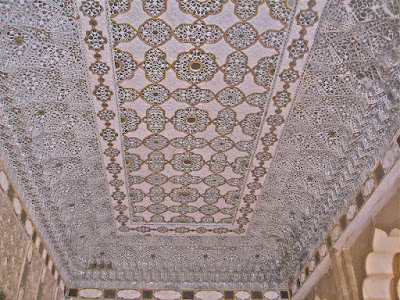 |
| Seanna Braigh |
Ascent: 1275 metres
Distance: 34 kilometres
Time: 11 hours 27 minutes
Seanna Bhraigh 927m 3hrs 37mins
Eilidh nan Clach Geala 928m 5hrs 22mins
Ceann Garbh 967m 6hrs 17mins
Meall nan Ceapraichean 977m 6hrs 28mins
Cona Mheall 980m 7hrs 36mins
Beinn Dearg 1084m 8hrs 27mins
Meall Chuaich had been a warm-up for this fine round of five mountains in the Inverlael forest. We stopped at Aviemore to buy a cheap torch, I had left our head torches at home. We drove up to Loch Broom where we grabbed our overnight packs and set out just before 6pm, slightly later than hoped. We had originally intended to pitch the tent below Seanna Bhraigh and climb the summit to watch the sunset over the north-west highlands. As it happened it was a grey evening and the views would not have been what I had hoped that Gregor could witness
It is a long walk-in to Seanna Braigh, there had been quite a lot of felling since my last visit and a new path eased progress up the steep climb at the end of the afforestation. Once above 500 metres it is a delightful walk on well-graded paths and alongside a series of lochans. Beyond here the going is less obvious as you traverse across an undulating plateau towards the cliffs, a couple of kilometres south of Seanna Braigh. This is where we camped for the fourth time in five visits to the hill. On the first visit in 1990, we had started early from Ullapool and passed this spot as an Australian was emerging from his tent mid morning on a two week walk over the North West Munros. It registered as a fine location for future excursions of the five hills. It is a well sheltered site at the top of the cliffs with a burn running through to provide water which on this occasion was used for soup, pasta, and tea. We turned in at 10:15pm to get rest before the long day ahead.
We had a surprisingly dry night and we set off to climb Seanna Bhraigh from the camp, which is at 720 metres. We arrived on the summit just after 8 a.m. and enjoyed great views to the west: Stac Polly, Cul Mor, Cul Beag, Suilven, Canisp and the rest of the spectacular Assynt summits were sashaying in the breezy morning light. We ate some food and just chilled at this superb viewpoint before a speedy return to the tent where we had some rice and a brew before packing for the long haul ahead.
We found a good route back towards Eididh nan Clach Geala cutting up to the ridge at just the right point to avoid unnecessary ascents and descents, the experience of previous walks had taught me something. It was very windy on the summit so we continued and found a good route down to the bealach. The climb up the slabs to the top of Ceann Garbh can be tricky but we kept more to the north and then climb southwards to the cairn. On the short walk over to Meall nan Ceapraichean we passed a runner coming the other way. We once again kept moving, it was cool in the wind and we dropped down to the bealach below Cona Mheall where we took some lunch.
We left our rucksacks here whilst we made the ascent of Cona Meal through the dense boulder field. We met a 70-year-old walker, Peter Dawson, who had recently lost his wife and was coping by attempting to climb the Munros from his camper van. He was at number 48. He asked about continuing to Am Faochagach, a walk I had done on my last round of these hills. I explained that it was a long haul out and it might be better to climb it separately from Dirrie Mor. He was not to be dissuaded so I explained the best route and wished him well. We returned to collect our rucksacks and to make the 260 metre ascent from the bealach to Beinn Dearg. We were walking well and made the summit in good time.
The choice then was whether to return to the bealach and follow the good path down or to descend the long ridge to the north-west, which is good for a few kilometres but leaves a steep and knee jarring descent to the Gleann na Scuaib before reaching the plantations. We chose the latter and were rewarded by walking through a large herd of wild goats. We made the car by 5:20 p.m. I left a note on Peter Dawson's car saying that he had gone from Cona Mheall to Am Faochagach. It would be long after dark before he returned. We drove to Ullapool for a meal and then continued to Achiltibuie where we rented a caravan for the night so that we could be rested for Suilven on the morrow.
 |
| The magnificent Assynt skyline from Seanna Braigh |
 |
| Breakfast in the summit shelter |
 |
| Our overnight campsite below Seanna Braigh, Cona Mheal on left |
 |
| Meall nan Ceapaichean and Beinn Dearg from Eididh nan Clach Geala |
 |
| Descending Beinn Dearg |
 |
| Beinn Dearg wall |








































